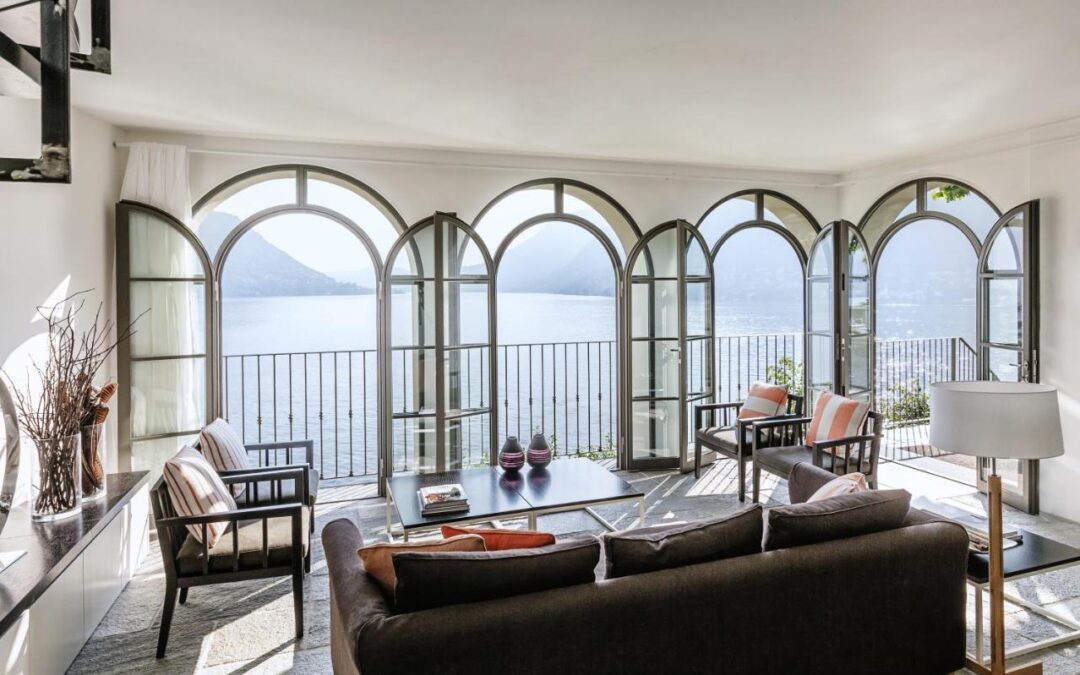So Beautiful, so Awesome
How many times have you sat comfortably in your armchair or on your porch and looked out at beautiful scenery?
Or maybe you have managed to create your reading corner with a view onto nature… Oh! That does feel good especially when outside it is particularly cold or hot for that matter.
And yes maybe reading you look up and think wow isn’t it beautiful and then put down your book stop and take in the beauty of mother earth in awe….
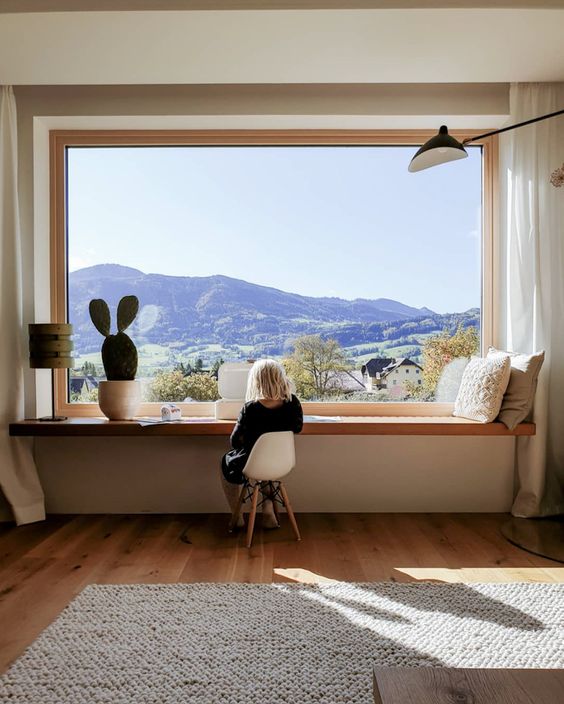
There is so much going on at this moment .. let’s break it down
Biophilia is defined as humanity’s innate need to connect with nature. Good design naturally incorporates elements of biophilia, creating spaces that induce a positive subconscious reaction by mimicking nature. To do so, designers simulate nature’s spatio-visual characteristics, a method known as Prospect and Refuge.
We are sitting in our beautifully designed seat naturally made from healthy materials such as certified wood, sustainable wool or cotton, or maybe a rattan. In any case we are engaging in an indirect experience with nature through the materials, as we are with a view upon nature ( unless we are actually outdoors). The view is vast and beautiful in fact we use the adjective awesome because this view stimulates a sensation of awe with the many benefits it has on our mood. read more about awe in our previous article “The benefits of creating an experience of Awe” … click here.
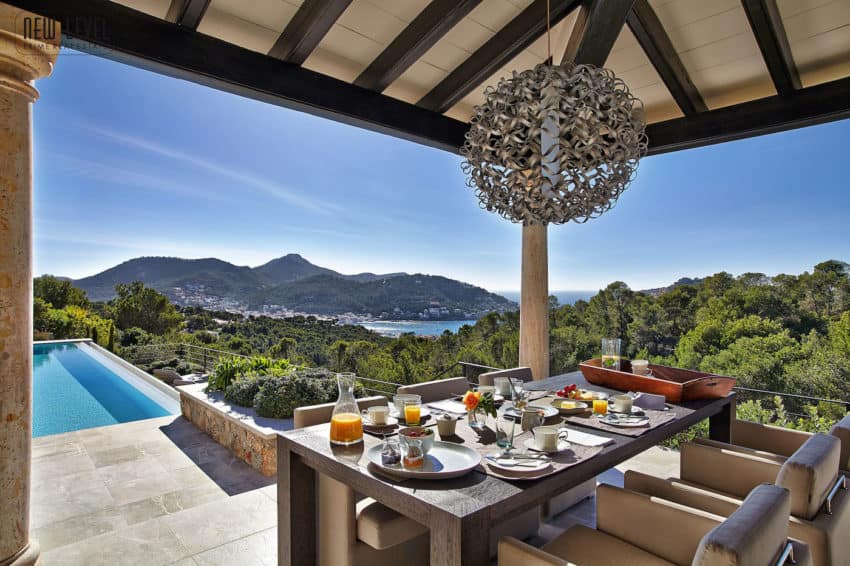
However, we are also engaging with experiences of space and place such as that of prospect and refuge and these touch our primordial emotions that often also lead to a sense of calmness and peace. Let’s take a look at why.
The theory of prospect and refuge is derived from the late nineteenth century anthropological belief in the human survival instinct (Darwin 1958); an impulse which directly connects human perceptions or reactions to environmental stimuli.
What we mean by this, is that in the times when we were still cavemen and had to hunt to find food and survive, having a prospect view of our environment meant that we could “scan” the horizon not only for potential dangers but also for opportunities of where food could come from (animals, but also vegetation _ the evolution of the seasons/weather) at the same time we would be sitting in our caves protected (Often known as the Savannah Hypothesis).
Have you ever wondered why caves were usually found on hillsides and not on planes?
Well,, naturally you would get a better view, a better prospect!
The Elements of Prospect-Refuge Theory.
What then are the elements of prospect-refuge theory? They include, in priority order, the following features:
-
- An outlook, vista, or view; is the prospect around which the remainder of the theory revolves. There are many ways of differentiating types of view or outlook but without this feature, the conditions that enable the theory do not exist.
-
- A setting, context of frame; the refuge, which contains or houses the viewer or person ex[1]periencing the prospect. It is only by providing such a frame to the view that the theory can work. The right balance, or pattern of relationship, between frame and view is important for a positive outcome.
-
- A sense, either real, implied, imagined or symbolic, that safety is required. The sense of comfort provided by the right balance of view and frame mentioned above, operates to provide psychological comfort of safety.
The Prospect-Refuge Theory could therefore be described in general terms as a particular environmental pattern, made up of spatial and formal relations that induce feelings of safety and well-being. The environmental pattern is achieved through a careful balance between vistas and frames. these also evoke a sense of the unknown. This theory suggests that humans seek out environments which make them feel secure. It also suggests that the aesthetic experience and pleasure which a person derives from observing and exploring an environment is reliant on a particular combination of openness and enclosure. The theory proposes that a balanced arrangement of prospect and refuge in an environment will achieve this affect.(1)
To put it in a nut shell:
Prospect looks at the idea that when you’re in a space, you want to be able to see it clearly, understand it and be aware of any threats, as well as opportunities.
Refuge, meanwhile, focuses on the feeling of being safe, surrounded, and protected.
Let’s now have a look at how we can include the protocol of prospect and refuge into the design of different spaces.
Prospect and Refuge Examples
1. Prospect and refuge theory in our homes.
It is great to have a restorative and relaxing space that looks out onto an open view.
If we manage to have a big window or a dehors all the better; we can also create a reading nook or simply an aggregative area that will not only pull us closer to nature but will also give us a view of nature to “scan”.
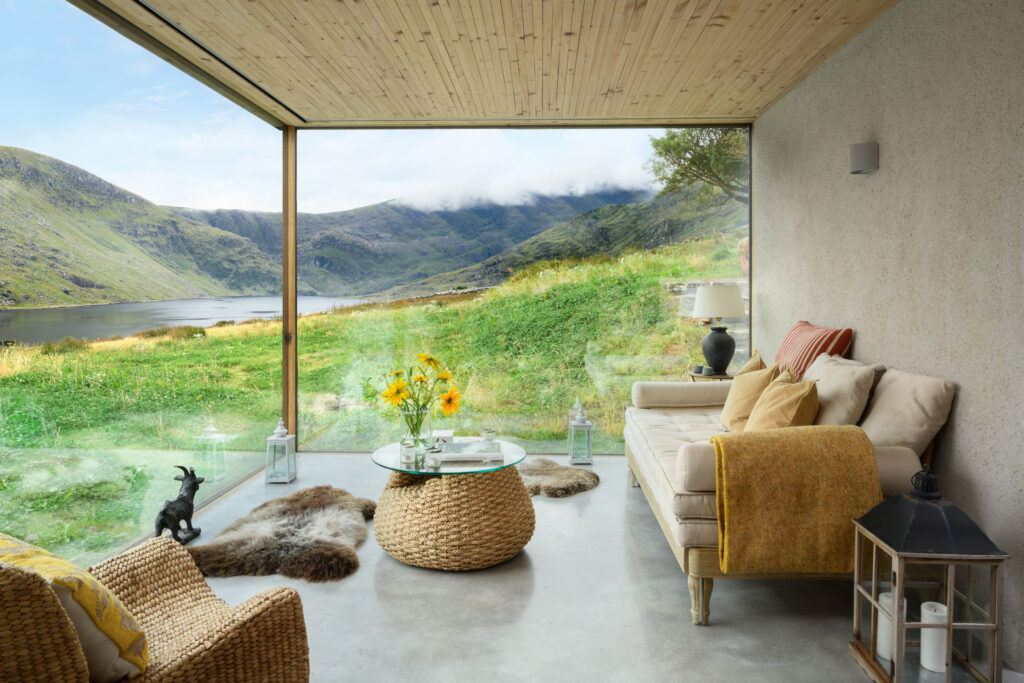
If however, we cannot have this direct view on nature, we could still have a prospect pattern if we create spaces that have a view from one space to the other. This is a typical characteristic of some Parisian Apartments – doors that lead through the entire depth of the apartment – often (not always) near to the windows.
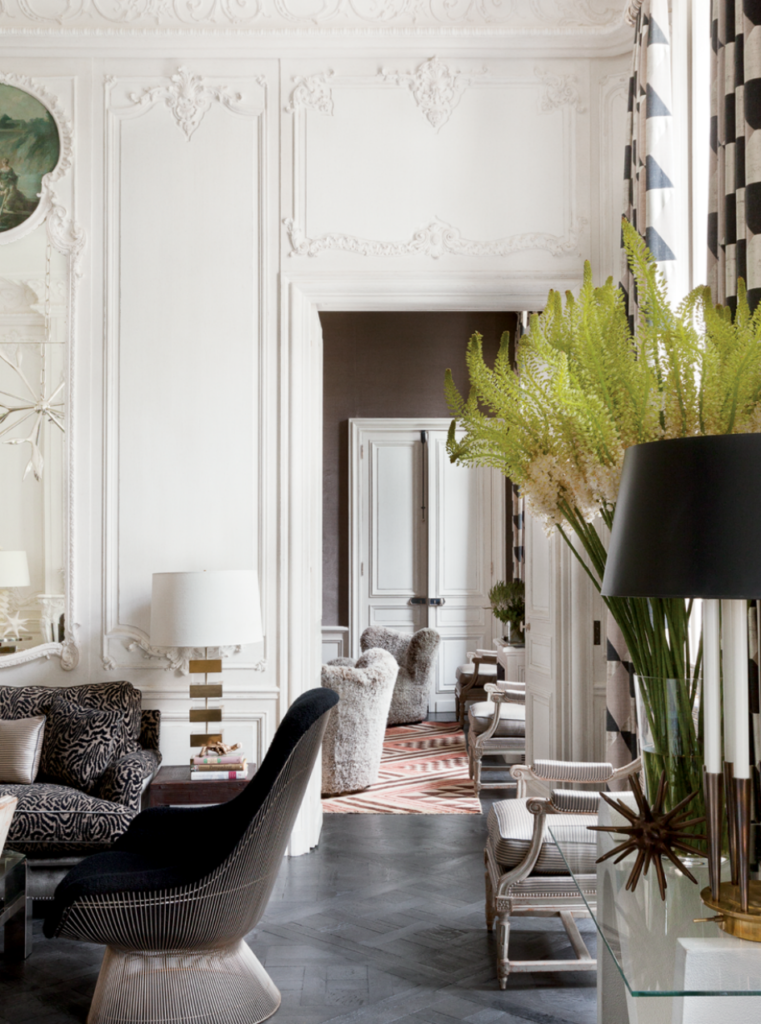
However, as mentioned above a sense of being protected is also very important.
2. Prospect and refuge theory Interior design for Hospitality.
Stop… Imagine.
You are walking into a restaurant; all tables are free.
WHAT SEAT DO YOU CHOOSE?
Maybe if they Have a fantastic view you may choose a table near the window with your back towards the restaurant or maybe you will choose a table with your back to the wall looking out into the space.
In either case, you are choosing to “protect” your back.
It is highly unlikely you will choose a table on the open floor.

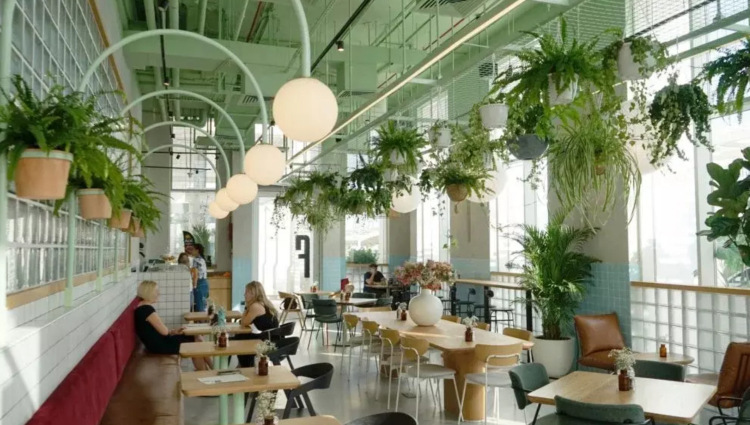
Utilizing Prospect and Refuge requires balance or the effect could be either lost.
Biophilic design has been shown to have numerous benefits such as reducing stress levels, increasing productivity, and improving overall well-being
3. Prospect and refuge theory on educational projects
Studies have shown that Schools incorporating nature and Biophilic Design reduces the levels of stress on the children, enhances the creation of bonds, cognitive development, and creativity. Prospect and refuge are Biophilic Patterns particularly interesting for educational projects.
Having raised one of my own children with ADHD, the role of nature to cope with this symptom was key, we were lucky to have a nature-centered Waldorf Steiner school nearby and this allowed him to grow grounded and confident. This was our blessing and a turning point in my life.
I am therefore very interested in how the spaces we create help our children interact joyfully with each other and yet allow them to cope with their symptoms.
Oliver Heath Design developed a great project in Hackney London for The Garden School, creating a space for children with autism, and although I did not visit it myself, just reading about the characteristics, I immediately felt the benefits it must have on these special children.
There is nothing that gives more happiness to a parent than knowing that your child is in an environment that makes him/her feel at ease and transmits a sense on tranquility, but also a place where they can play within their own dimension.
I invite you to watch carefullythis video.
I particularly love the hexagonal pods, it brings to mind the very essence of when children with particular needs look for safety whilst still remaining curious to what is going on outside. Participating at a distance without being overwhelmed by active participation.
In my opinion, Prospect and Refuge are pillar Patterns of Biophilic design and touches us at a primordial level.
If you are interested in connecting with like-minded people all on a Biophilic Journey. don’t hesitate Sign up now to The Biophilic Hub community so much more fun and information on the other side.
CLICK HERE TO JOIN THE BIOPHILIC HUB
(1)(source _ Prespect and Refuge theory by Anne Marie Dosen_ The International Journal of Design in Society · January 2013)
